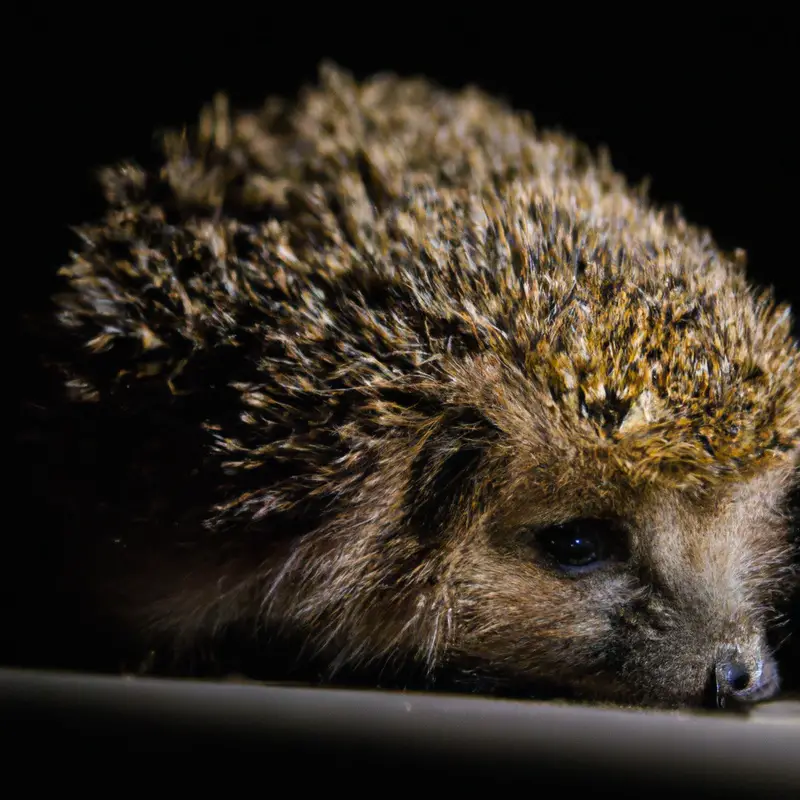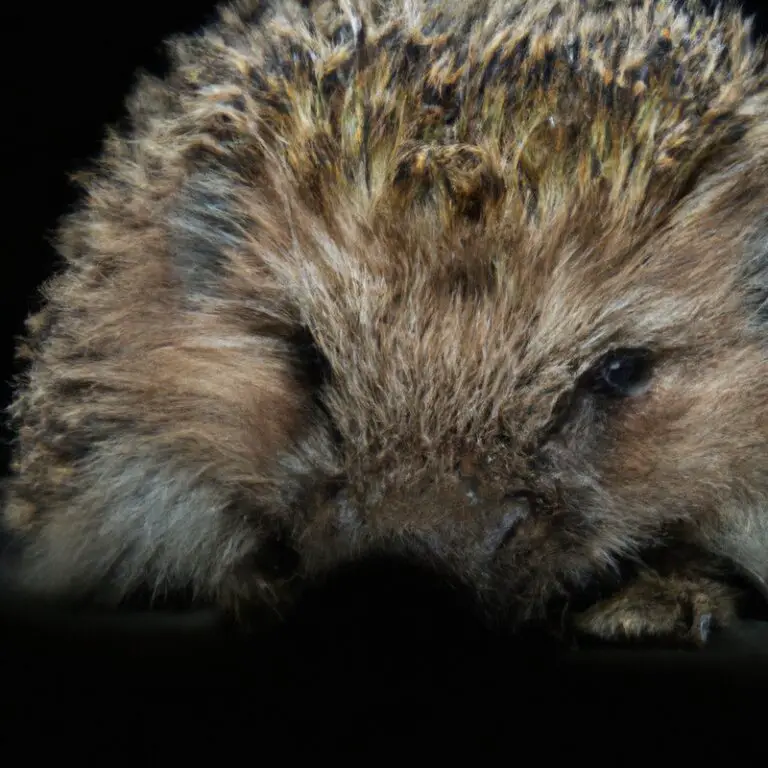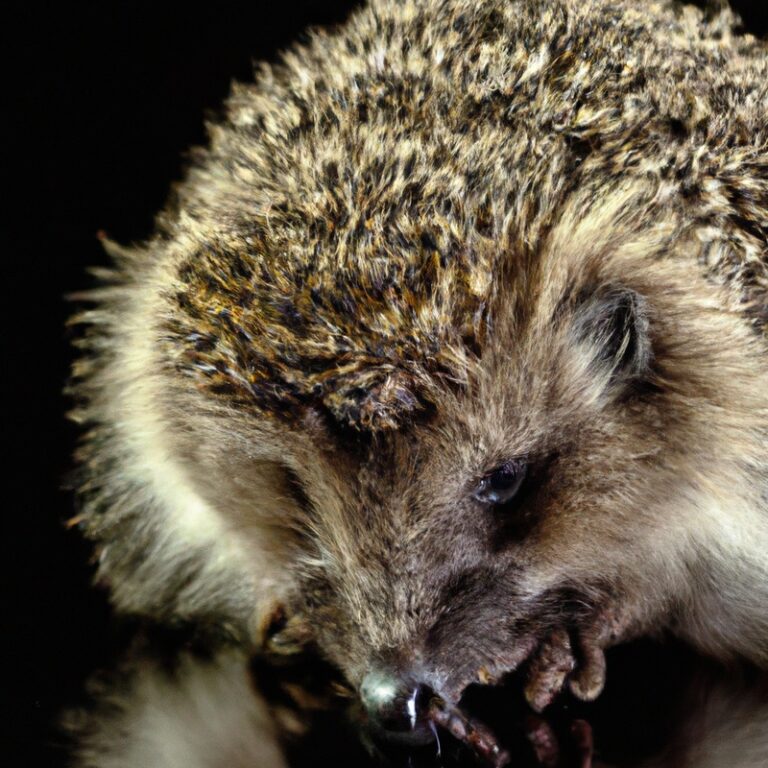What Is The Impact Of Climate Change On Hedgehogs?
Key Takeaways:
- Climate change threatens hedgehog populations by altering their habitats and reducing their food sources.
- Rising temperatures can lead to higher mortality rates among hedgehogs, especially during hibernation.
- Changes in rainfall patterns can affect hedgehog breeding and availability of water for their survival.
- Human intervention and habitat conservation efforts are crucial for mitigating the impact of climate change on hedgehogs.
Do you ever stop and wonder about the incredible diversity of life on our planet?
From majestic elephants to tiny insects, every creature plays an important role in balancing ecosystems.
Today, we’re diving into the fascinating world of hedgehogs and exploring the impact of climate change on these adorable prickly creatures.
Hedgehogs are more than just cute and cuddly; they are key players in maintaining healthy ecosystems.
But as the climate continues to change, how does it affect their survival?
Let’s find out together!
| Climate Change Impact on Hedgehogs | Description |
|---|---|
| 1. Habitat Loss | Hedgehogs’ natural habitat is changing or disappearing due to climate change, leading to a reduction in suitable living areas. |
| 2. Food Availability | Changes in climate patterns can affect the availability and timing of food sources for hedgehogs, potentially leading to scarcity and malnutrition. |
| 3. Hibernation Disruption | Warmer winters disrupt the hibernation patterns of hedgehogs, affecting their energy balance and survival rate. |
| 4. Predators and Diseases | Climate change alter ecosystems, potentially introducing new predators and diseases that hedgehogs are not adapted to, posing additional threats. |
| 5. Migration Challenges | In response to changing climatic conditions, hedgehogs may need to migrate longer distances to find suitable habitat, facing barriers and risks along the way. |
| 6. Reproductive Issues | High temperatures during breeding seasons can disrupt hedgehogs’ reproductive behaviors and reduce fertility rates. |
| 7. Population Decline | Combined effects of habitat loss, food scarcity, hibernation disruption, predation, diseases, migration challenges, and reproductive issues can lead to population decline of hedgehogs. |
Overview of Hedgehogs and their Importance in Ecosystems
Hedgehogs play a significant role in ecosystems due to their characteristics and behaviors.
Description of Hedgehogs and their Characteristics
Hedgehogs are small mammals that are known for their spiky coat of spines. They have an average size of 6-9 inches and weigh around 1-2 pounds.
Hedgehogs are mainly nocturnal, meaning they are most active during the night.
They have sharp senses of hearing and smell, but their eyesight is not very strong. Hedgehogs are omnivores, meaning they eat both plants and small animals like insects and worms.
They have a habit of curling up into a ball when they feel threatened, using their spines as a defense mechanism.
Hedgehogs are generally solitary animals and build nests in bushes or hedges for shelter.
Role of Hedgehogs in Ecosystems
Hedgehogs play an important role in ecosystems.
Here’s why:
- Pest Control: Hedgehogs are natural predators of insects, slugs, and snails. By eating these pests, they help control their populations and maintain a balance in the ecosystem.
- Seed Dispersal: Hedgehogs consume fruits and berries, and as they move around, they unintentionally spread the seeds in their droppings. This helps in the dispersal of plant seeds, contributing to the growth and diversity of plant life.
- Soil Aeration: As hedgehogs dig, they help aerate the soil, allowing air and water to penetrate the ground. This improves soil quality and nutrient availability for plants.
- Food Chain Support: Hedgehogs are part of the food chain, serving as a source of food for larger predators such as owls and foxes. Their presence helps maintain a balanced ecosystem by providing sustenance for other species.

Understanding Climate Change and its Effects
Climate change refers to long-term shifts in temperature and weather patterns, which can have significant impacts on the environment and various species, including hedgehogs.
Explanation of Climate Change and its Causes
Climate change refers to long-term shifts in temperature, precipitation, and other weather patterns on Earth.
It is primarily caused by human activities, such as burning fossil fuels and deforestation, which release greenhouse gases into the atmosphere.
These gases, including carbon dioxide and methane, trap heat and cause the planet to warm up.
Climate change can lead to rising sea levels, more frequent and severe natural disasters, and disruptions to ecosystems and biodiversity.
It is essential to address the root causes of climate change to mitigate its impacts.

Observable Effects of Climate Change on the Environment
The observable effects of climate change on the environment are varied and significant. Rising temperatures are causing glaciers and ice caps to melt, leading to rising sea levels.
This, in turn, threatens coastal ecosystems and communities.
Climate change also contributes to more frequent and intense extreme weather events, such as hurricanes and droughts. It disrupts ecosystems, putting species at risk of extinction and altering habitats.
Changes in rainfall patterns impact agriculture and water availability.
Overall, climate change is having a profound impact on our planet.
How Climate Change Affects Hedgehogs
Climate change directly affects hedgehogs by altering their habitats, impacting their diet and food availability, and affecting their reproduction and survival.
Alteration of Hedgehog Habitats due to Climate Change
Climate change is causing significant alterations to hedgehog habitats. Rising temperatures and changes in precipitation patterns are affecting the availability of food and water sources for hedgehogs.
Additionally, changes in vegetation growth and timing are disrupting their natural foraging and breeding patterns.
Rising sea levels also threaten coastal habitats where hedgehogs reside. These habitat alterations make it challenging for hedgehogs to find suitable shelter, food, and mates, ultimately impacting their survival and population numbers.
Changes in Hedgehog Diet and Food Availability
The changing climate has significantly impacted the diet and food availability for hedgehogs. As temperatures rise and rainfall patterns shift, the availability of insects, which make up a large part of their diet, has been greatly affected.
Hedgehogs rely on a steady supply of insects such as beetles, caterpillars, and earthworms for their nourishment.
However, with fluctuations in weather and reduced insect populations, hedgehogs struggle to find enough food to sustain themselves. This has serious implications for their survival and overall health.
Additionally, changes in vegetation and plant growth patterns also affect the hedgehog’s food sources, limiting their options even further.
Impact of Climate Change on Hedgehog Reproduction and Survival
Climate change negatively impacts hedgehog reproduction and survival. Rising temperatures and changing weather patterns alter the availability of food and water, which can lead to malnutrition and dehydration in hedgehogs.
Furthermore, extreme weather events, such as heatwaves and floods, can destroy their habitats and disrupt breeding cycles.
Prolonged droughts can also reduce the availability of suitable nesting sites. These effects of climate change make it more challenging for hedgehogs to successfully reproduce and survive in their changing environments.
Specific Examples and Studies on Climate Change Impact on Hedgehogs
Research has shown that climate change has led to disruptions in hedgehog hibernation patterns and a decline in their food sources.
Additionally, increased temperatures and changes in rainfall patterns may also have negative impacts on hedgehog populations.
Research on Hedgehog Population Decline and Climate Change
Research has indicated a significant decline in hedgehog populations, which can be attributed to the impacts of climate change.
Studies have found that changes in weather patterns, such as increased temperatures and altered rainfall patterns, affect the availability of food and suitable habitats for hedgehogs.
Additionally, extreme weather events and habitat destruction further exacerbate their decline.
These findings highlight the urgent need for conservation efforts and habitat restoration to protect hedgehogs from the consequences of climate change.
Actions to Mitigate Climate Change Impact on Hedgehogs
To mitigate the impact of climate change on hedgehogs, efforts are being made to protect their habitats, promote sustainable land use practices, and raise awareness and support for their preservation.
Wildlife Conservation Efforts to protect hedgehog habitats
To protect hedgehog habitats, wildlife conservation efforts are focused on a few key strategies.
Firstly, protecting and restoring natural habitats such as woodlands, meadows, and hedgerows helps provide the necessary food and shelter for hedgehogs.
Secondly, raising awareness about the importance of hedgehog conservation and encouraging responsible gardening practices, like avoiding the use of pesticides and creating hedgehog-friendly spaces, can make a significant difference.
Finally, collaboration between conservation organizations, researchers, and government agencies is crucial to develop and implement effective conservation measures.
Promotion of Sustainable Land Use Practices for Hedgehog Conservation
To promote sustainable land use practices for hedgehog conservation, you can start by creating wildlife-friendly habitats.
This involves keeping your garden or outdoor space free from chemicals and providing shelter, such as log piles or hedgehog houses.
Additionally, planting native plants and creating wildlife corridors can help hedgehogs move freely between habitats.
Lastly, being mindful of hedgehog-friendly farming practices, such as reducing pesticide use and creating safe fencing, can contribute to their conservation.
Raising Awareness and Support for Hedgehog Preservation
One way we can have a positive impact on hedgehog preservation is by raising awareness and support. Here are a few ways you can help:
- Spread the word: Share information about hedgehogs and their conservation needs with your friends, family, and community. Social media can be a powerful tool for raising awareness.
- Create hedgehog-friendly habitats: Make your garden or outdoor space hedgehog-friendly by providing shelter, food, and water. Avoid using pesticides and create gaps in fences to allow them to roam freely.
- Support organizations: Consider donating to or volunteering with organizations that work towards hedgehog preservation. They rely on public support to carry out their important work.
- Get involved in citizen science projects: Participate in projects that involve monitoring hedgehogs and recording their populations. This data is invaluable for researchers and conservation efforts.
- Educate yourself: Learn more about hedgehogs, their habitats, and the threats they face. The more informed you are, the better equipped you’ll be to make a difference.
Remember, every small action counts when it comes to preserving hedgehogs and their natural environment. By raising awareness and offering support, we can help ensure these fascinating creatures have a safe and thriving future.
Frequently Asked Questions (FAQs) about Climate Change and Hedgehogs
Can hedgehogs adapt to climate change?
Hedgehogs, like any other species, have the ability to adapt to climate change to some extent.
They are resilient creatures that can adjust their behavior and habits in response to changes in their environment.
For example, they may alter their hibernation patterns, change their feeding habits, or even shift their range to find more suitable conditions.
However, their ability to adapt to rapid and extreme changes associated with climate change remains uncertain.
Factors such as habitat loss, reduced food availability, and increased predation can hinder their ability to adapt effectively.
So while hedgehogs may have some adaptability, the long-term impacts of climate change on their survival and population remain a concern.
How can individuals help hedgehogs in the face of climate change?
To help hedgehogs in the face of climate change, you can:
- Create hedgehog-friendly habitats by providing shrubs, log piles, and wild areas in your garden.
- Avoid using pesticides and chemicals in your yard to protect the hedgehogs’ food sources.
- Ensure there is a water source available for hedgehogs, especially during dry periods.
- Install hedgehog houses or shelters in quiet corners of your garden.
- Be cautious when using garden tools, such as strimmers and lawnmowers, to avoid injuring hedgehogs.
Final Verdict
Climate change poses significant threats to hedgehog populations and their ecosystems.
The alteration of hedgehog habitats, changes in food availability, and disruption of reproductive and survival patterns are all observable effects of climate change.
Research indicates a decline in hedgehog populations and habitat loss due to climate change.
However, there are actions that can be taken to mitigate these impacts, such as wildlife conservation efforts, promotion of sustainable land use practices, and raising awareness and support for hedgehog preservation.
It is crucial for individuals and communities to join these efforts to ensure the future survival of these beloved creatures.







